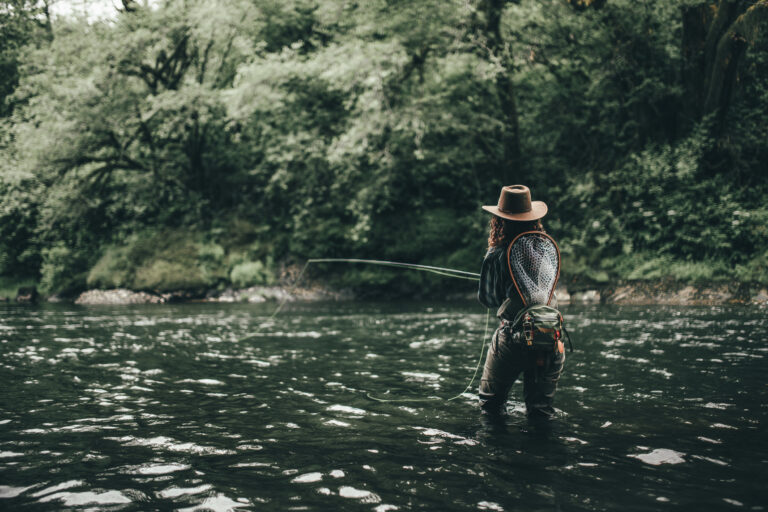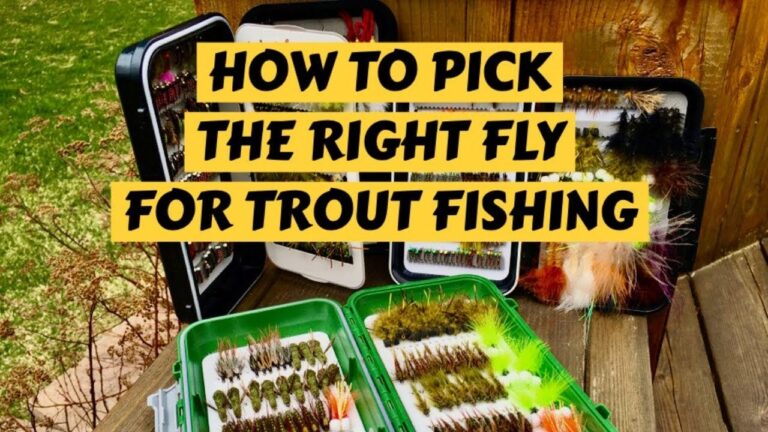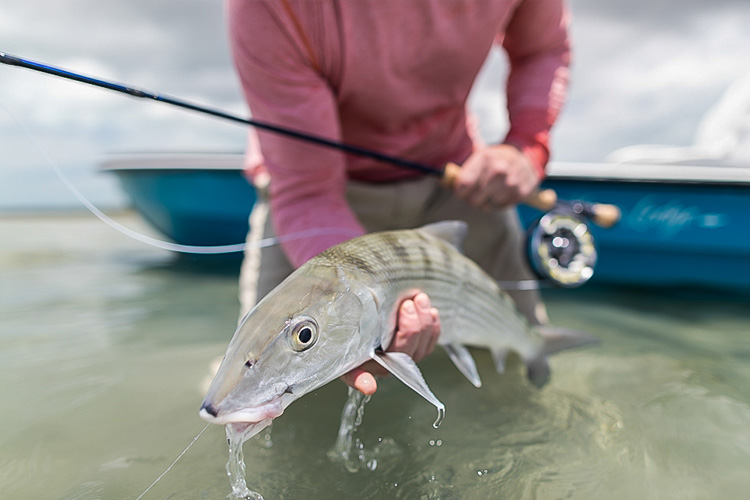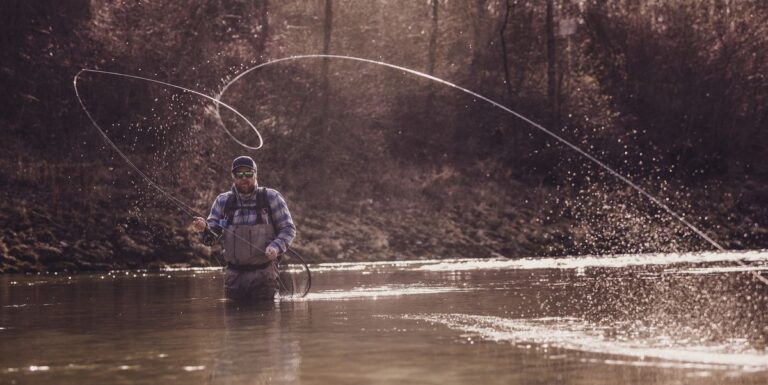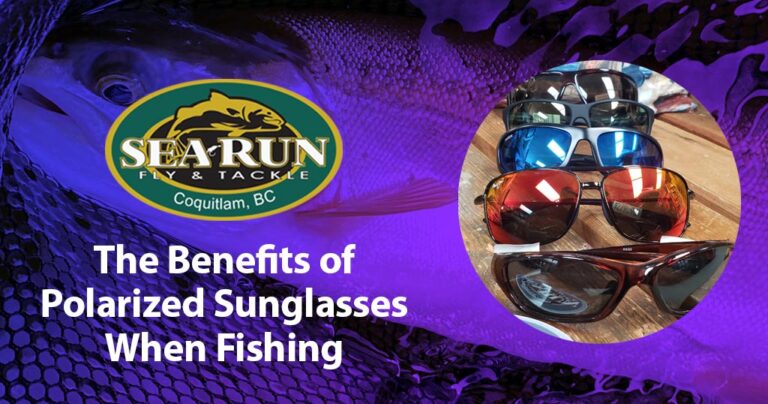Understanding tides in flats fishing is crucial to success. Flats fishing is highly dependent on the tidal movement and its effects on the ecosystem.
Tides play a significant role in determining the location, behavior, and feeding patterns of fish in the flats. From incoming tides that bring baitfish and crustaceans to the flats to outgoing tides that create prime feeding opportunities for predatory fish, tides govern the cycles of the flats.
Therefore, having a comprehensive understanding of tides and their impact on flats fishing is essential for any angler. In this article, we will delve deeper into the workings of tide and explore how it affects fish behavior, feeding activity, and fishing techniques that you can adopt to increase your chances of reeling in a trophy catch.

Credit: www.grundfos.com
What Are Tidal Flats?
Tidal flats are essential topographical features found near oceanic shorelines. They are areas where the water level rises and falls with the tides, creating a unique ecological system that supports diverse marine life. In this section of our blog post, we’ll explore the definition of tidal flats and their importance in flats fishing.
Definition Of Tidal Flats
Tidal flats are vast stretches of sand or mudflats that are submerged and exposed daily by tidal cycles. These areas are mostly found in shallow waters, which makes them highly sensitive to tidal movements. During high tide, water inundates the flat, while during low tide, the flat becomes visible.
The differing water levels create a habitat that supports a wide variety of marine life forms.
- Tidal flats occur where there is an intertidal zone, which is the area between low and high tide where the land is submerged and exposed every day.
- These flats are mostly comprised of sand or mud and are frequently used by fish as feeding and breeding grounds.
- Tidal flats have a unique ecosystem that supports a wide range of marine plants, microorganisms, vertebrates, and invertebrates.
Importance Of Tidal Flats
Tidal flats play an essential role in fishing, as they create a functional environment for different species of fish to thrive. These flats offer unique opportunities for flats fishermen to explore and catch a wide variety of marine species. The significance of tidal flats is explained below:
- Tidal flats are the primary habitat for many fish species, including redfish, snook, trout, and bonefish. These flats provide them with ample feeding opportunities, protection from predators, and space for breeding.
- Tidal flats have an abundance of food sources such as crab, shrimp, and other invertebrates, attracting various gamefish to these areas.
- Tidal flats are easily accessible and provide fishermen with an opportunity to wade, kayak, or pole their boats to reach and explore these flats.
- Tidal flats present different challenges and strategies to flats fishermen, such as the need to identify feeding patterns and select appropriate bait and fly patterns
- Tidal flats offer a relaxed and tranquil fishing experience, as fishermen can enjoy the beauty of the surrounding environment and wildlife.
Tidal flats are important features of oceanic shorelines that support a unique ecological system. These flats host a diverse range of marine life forms and are essential habitats for different species of fish. For flats fishermen, it serves as an opportunity to explore new fishing grounds, learn more about the different species of fish, and customize their approach to catching them.
What Is Tidal Flats Fishing?
Understanding Tides In Flats Fishing
Flats fishing is an exciting and challenging way to catch fish in shallow waters. One of the essential aspects of this type of fishing is understanding tides. Tides play a crucial role in flats fishing, and mastering the art will increase your chances of making a successful catch.
We will explore what tidal flats fishing is, why it is important, and why it is essential to master it.
Definition Of Tidal Flats Fishing
Tidal flats fishing is a type of fishing that involves catching fish in shallow waters, usually less than five feet deep, that are close to shore. These shallow waters are also known as flats, and they are often found along coastlines, estuaries, and bays.
Tides significantly impact these flats by flooding and receding, affecting the fish’s behavior and movement. Understanding these tidal movements and the fish’s responses to them is a crucial part of flats fishing.
Some fish commonly caught in tidal flats fishing include redfish, bonefish, tarpon, and permit. Flats fishing is often practiced using light tackle, making it a challenging fishing style that requires patience, skill, and knowledge.
Importance Of Tidal Flats Fishing
Tidal flats fishing is essential for both recreational and commercial fishing. For recreational anglers, flats fishing provides a unique and exciting way to catch fish. It also allows anglers to appreciate the beauty of the flats environment and the various species of fish that call it home.
Commercially, flats fishing is vital for the fishing industry. Many people rely on the industry for their livelihood, and flats fishing is an essential part of that. Understanding tidal movement plays a crucial role in commercial fishing, and it is often used to target specific species, such as shrimp, oysters, and crabs.
Why Mastering Tidal Flats Fishing Is Essential
Tidal flats fishing can be a challenging and complex way of fishing, but mastering it is crucial for success. Fish behavior and movement are directly influenced by tidal patterns, and understanding how these patterns work can significantly increase the chance of a successful catch.
Here are some reasons why mastering tidal flats fishing is essential:
- Knowing when to fish: Tidal movements affect the water levels and fish behavior, so understanding these patterns helps anglers determine the best time to fish.
- Understanding fish behavior: Fish respond to different tidal patterns and movements, so understanding how they behave and move is crucial in catching them.
- Identifying the right bait: The right bait can significantly impact a catch, so knowing which bait to use during certain tidal patterns is essential.
- Choosing the right tackle: Tidal currents can make fishing with the wrong tackle difficult or even impossible, so choosing the right tackle for specific circumstances is crucial.
Understanding tidal flats fishing is a crucial aspect of being a successful angler, whether for recreational or commercial purposes. The ability to read the tides and understand how they impact the fish and their behavior can significantly improve the chances of making a successful catch.
Understanding The Conditions
Tides play an essential role in flats fishing. They affect the movement and behavior of fish, making it crucial to understand them and identify the best fishing conditions. In this section, we will uncover the impact of tide movements on flats fishing and the relationship between weather and tidal flats.
Tide Movements And Their Impact
To understand tides’ impact on flats fishing, it’s necessary to know the different types of tide movements:
- Incoming tides: This is when water moves towards the shore, causing fish to move towards the flats, which can result in a feeding frenzy.
- Outgoing tides: As water flows out from the shore, it can take baitfish and other prey with it, causing fish to chase after them.
- High tide: During high tide, fish move onto the flats to feed in the shallower waters. It also provides access to other areas that may be difficult to reach.
- Low tide: When the tide is low, fish move away from the flats and into the deeper waters.
Understanding these tide movements is crucial to determine the best time for flats fishing and which species to target.
The Relationship Between Weather And Tidal Flats
Weather plays a critical role in flats fishing as it can impact the tidal flow and fish behavior. The following are some weather conditions that can affect flats fishing:
- Winds: Strong winds can push water towards or away from the shore, creating faster or slower tidal currents. This can affect the feeding behavior of fish and the accessibility of certain areas.
- Rainfall: Heavy rainfall can cause runoff and freshwater influx, which can impact the salinity levels and water clarity, affecting fish behavior.
- Temperature: Water temperature can also impact fish behavior, with some species preferring warm waters and others cooler temperatures.
It’s essential to keep an eye on the weather forecast when planning a flats fishing trip to ensure optimal conditions.
Identifying The Best Tidal Flats Fishing Conditions
To identify the best tidal flats fishing conditions, consider the following:
- Tide chart: Check a tide chart to determine the best time for flats fishing according to the tide movements.
- Water clarity: Look for clear water, as it’s easier to spot fish and lure them towards your bait.
- Structure: Pay attention to the flats’ structure, such as sandbars, drop-offs, and channels as they can attract fish and provide cover.
- Weather conditions: Consider the weather conditions mentioned above and aim for days with mild winds, low chance of rain, and optimal water temperature.
Understanding tidal movements and fishing conditions is paramount to successful flats fishing. Keep track of tide charts and weather forecasts to increase your chances of catching the fish of a lifetime!
Choosing The Right Tackle
Understanding Tides In Flats Fishing
Flats fishing can be an exciting and challenging experience, especially when it comes to understanding tides. It’s important to choose the right tackle, bait, and fishing techniques to maximize your catch. In this blog post, we’ll explore the key information you need to know about each of these topics.
Fishing Gear For Tidal Flats Fishing
When it comes to fishing gear for tidal flats fishing, there are a few things to keep in mind:
- Rod and reel: Choose a lightweight rod and reel that allows you to cast with precision and control. A 7- to 8-foot rod with a fast action tip is ideal for flats fishing.
- Line: Use a low-visibility, braided line with a high-pound test. This type of line is strong and sensitive, allowing you to feel even the slightest bite.
- Leader material: A 12- to 20-pound fluorocarbon leader is recommended, as it is nearly invisible underwater and has great abrasion resistance.
- Polarized sunglasses: Wearing polarized sunglasses will help you see through the glare of the water, making it easier to identify fish and structure.
Bait Selection For Tidal Flats Fishing
Choosing the right bait can be the difference between a successful day on the water and going home empty-handed. Keep these tips in mind:
- Live bait: Live bait like shrimp, crabs, and minnows are great choices for flats fishing. They are more likely to attract fish and are easier to keep alive in a bait bucket or live well.
- Artificial lures: Artificial lures such as topwater plugs, soft plastic baits, and jigs are also effective for flats fishing. They can mimic the appearance and movement of natural prey.
- Match the hatch: Pay attention to the type of baitfish that are present in the area and try to match your bait to that type. This will increase your chances of attracting bites.
Upgrading Your Fishing Techniques
If you want to take your flats fishing game to the next level, consider upgrading your fishing techniques. Here are a few tips:
- Learn to cast accurately: Practice casting in different conditions and with different lures. This will help you improve your accuracy and control.
- Use the wind and tide to your advantage: Pay attention to the direction and speed of the wind and tide, as they can help you position your boat and present your bait more effectively.
- Change up your retrieval technique: Experiment with different retrieval techniques, such as twitching or jerking your lure, to entice fish to bite.
By choosing the right tackle, bait, and fishing techniques, you can improve your odds of having a successful day of flats fishing. Keep in mind the tips we’ve discussed in this post to increase your chances of catching that trophy fish.
Tidal Flats Fishing Strategies
Understanding Tides In Flats Fishing: Tidal Flats Fishing Strategies
Tidal flats fishing can be a challenging but rewarding experience for anglers of all skill levels. However, mastering the techniques requires an in-depth understanding of fish habitats, tidal patterns, and numerous fishing strategies. In this section, we will dive into the key strategies for tide flats fishing that will enhance your fishing experience and increase your chances of a successful catch.
Reading Tidal Flats And Identifying Fish Habitats
Before you start fishing on the tide flats, it’s essential to understand the tidal patterns and tidal flats. Identifying the habitats of various fish species can help you determine the best spots to cast your bait or lure. Here’s how to do it:
- Look for fish movements: Fish move around the tide flats depending on the tides. Observe where they go and where they congregate.
- Check the water depths: Fish move from shallow to deep depending on the tide. So, understanding water depths and how they change during the tide can help you anticipate where fish are likely to be.
- Know the structure of the tide flat: Look for underwater structures like sand, seagrass beds, rocks, or channels that may harbor fish and other sea creatures.
Fishing Techniques For Different Species On Tidal Flats
Different fish species prefer different bait and lure and require different fishing techniques. Here are some fishing techniques for different species on tidal flats:
- Redfish: Redfish is a popular game fish found on tidal flats, and their favorite bait is crabs or shrimp. Use cajun thunder floats and a circle hook to mimic the prey they hunt. These fish are also attracted to flashy lures made of colored plastics and metal spoons.
- Trout: Speckled trout love shrimp and baitfish like mullet, pigfish, and croaker. Use lures like jigs, soft plastics, or popping corks.
- Snook: Snook love live bait like pinfish, pigfish, and croakers. They also like floating, noisy lures like topwater plugs.
Mastering Techniques For Different Depths And Water Conditions
Apart from identifying fish habitats and using the right bait or lure for different fish species, various techniques can help you improve your chances of catching fish more effectively on tidal flats. Here are some mastering techniques to help you:
- Master the cast: Learn how to cast your line accurately, and make sure your bait or lure lands softly on the water’s surface to avoid alarming the fish.
- Retrieve properly: Practice retrieving your lure slowly and continuously to attract the fish’s attention. Jerk your bait or lure occasionally to mimic prey.
- Adjust to the water conditions: Tidal flats’ water conditions can change depending on the wind direction, water depth, and tide. Change your bait or lure to match the prevailing water conditions to improve your chances of catching fish.
Understanding tidal patterns, fish habitats, and mastering various fishing techniques can help you enjoy a successful flats fishing experience and a fruitful catch. Use the tips to enhance your tidal flats fishing strategy and catch more fish. Happy fishing!
Knowing Your Surroundings
Understanding Tides In Flats Fishing
In flats fishing, understanding the tide is crucial for a successful trip. Tides impact the location, activity, and behavior of fish, presenting both opportunities and challenges for anglers. Knowing your surroundings and how to navigate tidal flats is key to a productive and safe experience.
In this blog post, we’ll explore the ins and outs of fishing tides in flats, including understanding the ecosystem, navigating tidal flats, and avoiding common hazards.
Understanding The Ecosystem
To understand tides, it’s important to first understand the ecosystem of a flat. Flats are shallow areas of water, typically found near the coast. They are home to a variety of marine life, including fish, birds, and plants, and are heavily influenced by tides.
Tides are caused by the gravitational pull of the moon and sun, which cause water to move in and out of bays and estuaries. As the tide rises and falls, it changes the depth and flow of water on flats, impacting the behavior and location of fish.
Here are some key points to keep in mind when considering the ecosystem of a flat:
- Flats can be composed of a variety of surfaces, including sand, mud, or grass beds.
- Certain fish species prefer specific types of flats, so understanding the type of flat you’re fishing can help you target your efforts more effectively.
- Water temperature, salinity, and other environmental factors can also impact fish behavior on flats.
How To Navigate Tidal Flats
Navigating a tidal flat can be a challenge, especially if you’re not familiar with the area. The changing water levels can make it difficult to stay on course, while hazards such as oyster beds and submerged objects can damage boats and cause injuries.
To navigate tidal flats safely and effectively, here are a few tips to keep in mind:
- Check tide charts and plan your trip accordingly. High tide is generally the best time to fish on flats, as it brings fish in closer to shore.
- Use a gps or map to mark hazards and track your progress. Stay in channels or marked areas to avoid running aground or hitting underwater obstacles.
- Wear polarized sunglasses to cut down on glare and help you see submerged structures.
- Learn to read the water to identify areas where fish are likely to be located, such as channels, drop-offs, and shallow flats.
Avoiding Common Hazards
Fishing on a tidal flat can be a wonderful experience, but it’s important to be aware of potential hazards and take steps to stay safe. Here are a few hazards to watch out for:
- Oyster beds: These sharp, jagged structures can damage boats and cause serious injuries to anyone who falls on them. Stay away from areas where oyster beds are present, and be careful when walking on flats.
- Submerged objects: From logs to abandoned crab traps, there are plenty of objects lurking beneath the surface that can cause damage to boats and fishing gear. Keep an eye out for these hazards, and steer clear of areas where they’re likely to be present.
- Changing tides: Tides can rise and fall quickly on flats, leaving you stranded if you’re not careful. Be aware of the changing water levels, and plan your trip accordingly.
Navigating tides in flats fishing can be a challenging but rewarding experience. Understanding the ecosystem, how to navigate tidal flats, and avoiding common hazards can help ensure a successful and enjoyable trip. By following these tips and staying aware of your surroundings, you’ll be well on your way to reeling in your next big catch.
Proper Planning And Preparation
Understanding Tides In Flats Fishing
Fishing in tidal flats requires proper planning and preparation, and understanding the tides is a crucial part of it. Tides affect the water depth, temperature, and movement, which significantly influence the movement of the fish. We will discuss the proper planning and preparation required for tidal flats fishing, including optimal timing and scheduling, essential packing tips, and safety precautions.
Optimal Timing And Scheduling
If you want to maximize your catch, you should plan your fishing around the tides. Two significant tidal movements occur every day – high tides and low tides. Fishing during high tide provides you with better chances of finding more fish as it brings plenty of food into the tidal flat.
On the other hand, during low tide, fish are forced to move to deeper waters, making it harder to catch them in the flats. Make sure to check the local tide charts before heading out to ensure you’re fishing during the right tide.
How To Pack For Tidal Flats Fishing
When packing for tidal flat fishing, you must bring everything you need as facilities may be limited in remote locations. The following are a few essential items you shouldn’t forget to pack:
- Fishing license
- Sunscreen and a hat to protect yourself from the sun
- Polarized sunglasses that lessen the glare off the water
- A map and a compass in case you get lost
- A waterproof bag to protect your items from water
- Insect repellent to ward off biting insects
Safety Precautions
Safety should always be a top priority when preparing for any outdoor activity, and tidal flats fishing is no exception. Always follow these safety precautions:
- Wear appropriate footwear with good traction to avoid slipping on wet, muddy surfaces.
- Keep a safe distance from other anglers and boaters to avoid any collisions.
- Bring enough water and food to stay hydrated and nourished throughout the day.
- Keep a first aid kit nearby in case of emergencies.
- Always inform someone of your location and expected return time.
Proper planning and preparation are essential when fishing in tidal flats. By understanding tidal movements, packing necessary equipment, and following safety precautions, you can effectively improve your fishing experience and increase your chances of catching more fish.
Techniques To Improve Your Skills
Understanding Tides In Flats Fishing: Techniques To Improve Your Skills
Fishing in flats can be a challenging experience even for the most seasoned angler. It requires a combination of fishing skills and knowledge that goes beyond just casting and reeling in. Understanding tides is an essential part of fishing in flats.
Here are some techniques that can help improve your flats fishing skills.
Developing Your Casting Skill
Casting is one of the most crucial skills for any angler, and it’s particularly important when it comes to flats fishing. Here are some ways to improve your casting skill:
- Always keep your wrist locked and your arm straight when casting.
- Use your entire body rather than just your arm.
- Practice your timing to achieve a more effortless casting motion.
- Always follow through with your cast.
Improving Fishhooking Techniques
Hooking a fish can be tricky, especially in flats fishing, where the fish have plenty of space to move around. Here are some ways to improve your fishhooking techniques:
- Always keep your line tight and ready for instant hook setting.
- Try to set the hook repeatedly rather than relying on a single hook set.
- Use the right size hook for the fish you’re trying to catch.
- Strike at the right time, usually when you feel the fish pulling or nibbling at your bait.
Tips For Identifying And Catching Elusive Fish
In flats fishing, it’s not always easy to spot and catch fish. Here are some tips:
- Look for signs of fish such as wakes, movement in the water or mud, and fish tails protruding out of the water.
- Use polarized sunglasses to help you see beyond the water’s surface.
- Use stealth approaches, such as keeping a low profile and staying quiet.
- Use the right bait and lure that’s most attractive to the fish you’re trying to catch.
Keep these tips in mind, and you’ll be well on your way to mastering the art of flats fishing. Remember, practice makes perfect, so keep on honing your skills to become a more successful flats angler.
Conclusion
To conclude, understanding tides in flats fishing is crucial in determining the optimal time and location for fishing. Tide movements significantly influence not only the movement and behavior of fishes, but also the structure and condition of the flats. By grasping the concepts and factors affecting tide movements, anglers can strategically plan and alter their fishing techniques, increasing their chances of successful catch.
However, it is also vital to factor in other variables such as water temperature, weather, and season to maximize the outcome. Constant learning and observation of the flats and its inhabitants’ behavior can help anglers improve their skills in flats fishing.
With the right mindset and tools, embracing challenges and uncertainties in the flats can bring a fulfilling and satisfying experience that cannot be easily found elsewhere. Embrace the unpredictability, trust your senses, and enjoy the journey.

